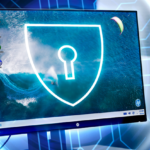Computer-held testing has become an integral part of the education system, providing educators with a convenient and efficient way to assess students’ knowledge and skills. As we discussed in our last blog, 3 Common Device Issues That Disrupt Standardized Testing, schools often encounter disruptive device issues on testing days.
Tag Archives: professional services
Integrating technology into the K-12 education system has become essential in today’s rapidly evolving world. EdTech (Educational Technology) solutions offer numerous benefits, including personalized learning experiences, improved student engagement, and streamlined administrative processes. However, many schools face budget constraints that hinder their ability to invest in the necessary hardware and software. That’s where grants come in. Securing grants can provide the financial aid needed to bring EdTech into classrooms, empowering students and teachers alike. This comprehensive guide will explore the top EdTech grants available to K-12 schools in 2024.
As we enter 2024, several key trends and challenges are likely to shape the landscape of K-12 EdTech. From device lifecycle management to program sustainability, there are several challenges and considerations educators and administrators may need to address. In this article, we’ll delve into the key trends and challenges 2024 has in store for k-12 education technology.
Computer-held standardized testing has become integral to K-12 education in today’s digital age. Nevertheless, issues are bound to arise when technology is involved. Even minor technical disruptions can cause a great deal of stress for both students and educators. In this article, we will discuss the technical problems your students may encounter on test day so you’re prepared to act when issues arise.
Technology has revolutionized how we live, work, and learn in today’s rapidly evolving world. Education technology has the power to enhance collaboration, improve engagement, and provide personalized learning experiences to students like never before. Unfortunately, financial limitations often hinder schools from fully embracing edtech in the classroom. Microsoft’s “Shape the Future” program is a commendable initiative to empower education by providing access to affordable technology solutions for K-12 communities.
With an enormous increase in phishing scams, malware attacks, ransomware schemes, and serious data breaches, the past two years have demonstrated that a strong cybersecurity system is essential for K-12 schools just as much as it is for corporations. The lack of adequate protection can be extremely disruptive and costly: from completely shutting down school operations to exposing students’ personal records, to costing millions of taxpayer dollars to pay ransoms.
In any environment, a broken device can be a big disruption to workflow. For K-12 schools where it is less common to have the budget to keep backup laptops or tablets on-hand and ready to go, broken devices can cause wasted time and learning distractions. Proactively managing the lifecycle of classroom devices—from purchase, to maintenance, to disposal—can seem pricey or time consuming up-front but offers significant benefits in the long run. Administrators should invest in a well-defined plan to deploy and manage devices across their schools and districts so that they are not surprised with unexpected delays, expenses, or security breaches down the road.
The 21st century classroom barely resembles the class environments of the past. Screens are mounted on the walls while assigned laptops and tablets are stored in carts in the corner of the room. With so many programs, installations, and assistive software available for these devices, it can become overwhelming for the teachers and instructors who are struggling to keep in […]








